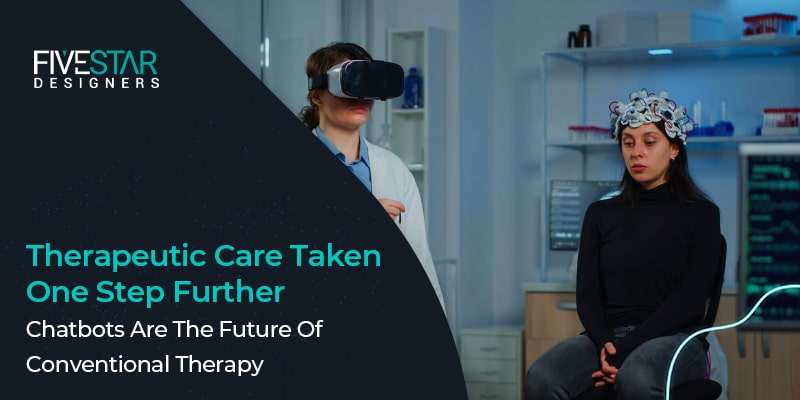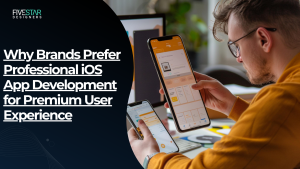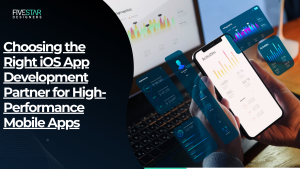Artificial Intelligence isn’t just transforming industries, it’s redefining what’s possible in therapeutic care. AI chatbots aren’t gimmicks, they’re serious game-changers reshaping mental health support. With chatbot app development we are now one step closer to a completely new ballpark of therapeutic services. Let’s dive into the tech behind these bots and their impact.
The Cogs And Gears Behind Chatbots
Here’s the breakdown: AI chatbots run on advanced natural language processing (NLP), machine learning (ML), and real-time sentiment analysis acting as always-available, hyper-efficient virtual therapists. They detect patterns in user input, offer contextual replies, and adapt over time—without ever clocking out.
The backend is where everything goes down. Massive amounts of datasets are utilized to train the AI model. The more the model interacts the more smarter it gets. Coupled with cloud computing and APIs, they’re scalable and secure, perfect for mobile app development. Users get to access these systems on their smartphones with ease.
Why App Developers Are Key to the Revolution
Creating therapy chatbots isn’t plug-and-play. App developers require merging smart AI models with credible and authentic therapy techniques.
Backend frameworks that handle NLP models with a frontend design that is inviting and user-friendly. This calls for specialized chatbot app development companies to ensure these bases are covered.
Scalable Tech
Chatbot apps and websites gained popularity in early 2022 with the surge in the advancement of NLP integration in AI and have been accumulating even more audience than ever.
It’s safe to assume your chatbot app will skyrocket with users, hence scalability is a must-have to address larger workloads or userbases.
User Oriented Experience
If users can’t navigate an app, it’s dead on arrival. Therapy chatbot experience relies heavily on these three key points.
Ease of Use:
Users shouldn’t need a manual to find features like journaling or mood tracking.
Human-like Conversations:
The bot’s tone must feel natural, not robotic.
Dynamic Design:
An interface that reflects the user’s behavior makes it speak to them providing a personal experience.
Real-World Benefits of AI Chatbots in Therapy
1. Around-the-Clock Access
Traditional therapy has limits: office hours, scheduling conflicts, and availability. Chatbots operate 24/7, filling the gaps. With mobile app development, users can access these bots anywhere—work, home, or on the go.
2. Hyper-Personalized Support
No two users are the same, and neither are their therapeutic needs. AI-powered apps analyze individual patterns, recommending custom exercises like breathing techniques for stress or mood-specific playlists.
3. Lower Costs, Higher Reach
Therapy sessions can be expensive and geographically limited. Apps powered by chatbots democratize mental health care, providing affordable solutions. App development agencies have an enormous opportunity to scale these services globally.
Challenges That App Developers Must Overcome
Non-Negotiable Privacy
Data Privacy is a serious matter on its own and the mental health data of a user is as sensitive as it gets. Being up to date and complying with encryption protocols and regulations like HIPAA or GDPR are a must. Developers need to design systems that prioritize data safety over everything else.
Bias in AI
Discrepancies and inaccuracies in datasets the AI model is trained upon can significantly impact the AI’s ability to work its magic. Bias in datasets can lead to problematic responses. Regular audits and diverse training data that are credible and up to standard are critical to keeping bots reliable and fair.
Bridging Emotional Gaps
If there’s one thing we can all agree upon is AI is far from replacing actual therapists. The main reason is that AI lacks empathy and cannot replicate emotions like a human which is an integral part of therapeutic counseling. This means app developers need to work extra hard on developing advanced NLP to match human-like interaction with emotional intelligence.
The Future: Where Tech Meets Care
With such a steep incline noticed in the field of AI advancement, we can expect some really cool and futuristic approaches for artificial intelligence-led therapy.
Augmented Reality (AR):
By adding visual elements to the treatment, bots can guide users through immersive, calming environments during anxiety attacks.
Predictive Interventions:
Using behavioral data, chatbots could alert users to potential mental health crises before they escalate.
Global Reach:
Multilingual NLP models will break language barriers, making mental health care accessible worldwide.
These innovations will push app developers to rethink how they approach chatbot design and deployment. The intersection of AI and care is just getting started.
Why Choosing the Right Development Partner Matters
Building a simple app is no walk in the park much less developing a highly complex AI-based mobile app with NLP integration that interacts in real-time. The best course of action is to contact an app development agency that specializes in this particular niche of AI chatbot app development to ensure the tech, UX, and compliance pieces come together flawlessly.
Therapeutic care apps are often high-stakes. However, they are equally rewarding as you get to create apps that benefit or even change someone’s life.
Conclusion
AI chatbots are redefining mobile app development in the mental health space. They’re not just about cool tech; they’re about making a real impact. For app development agencies and innovators, the challenge isn’t just about creating something functional—it’s about pushing the limits of what tech can do in the name of care.




